1lumen selects and reviews products personally. We may earn affiliate commissions through our links, which help support our testing.
Nitecore MT06MD Review
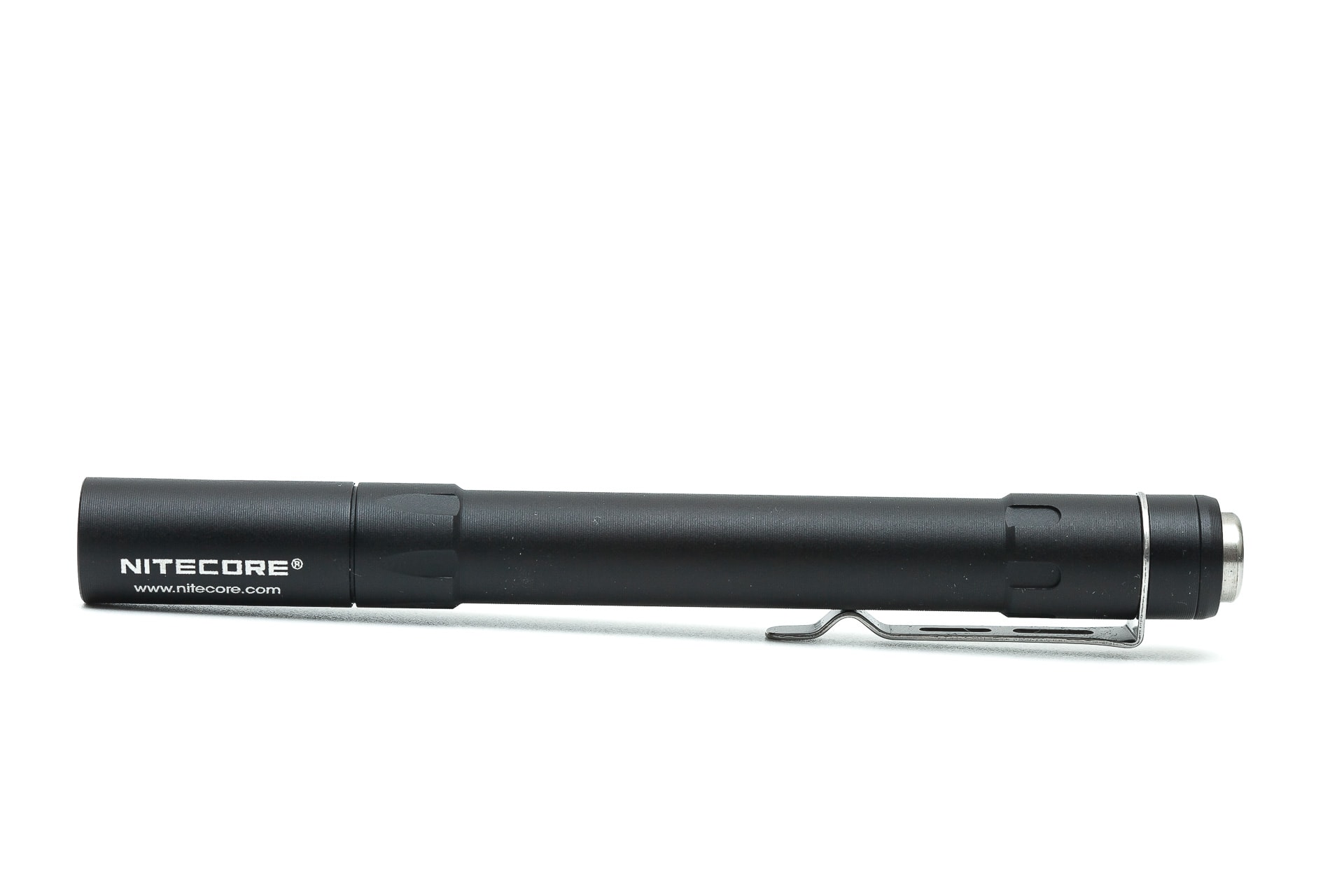
Nitecore MT06MD specifications
| Brand/model | Nitecore MT06MD |
|---|---|
| Category | Best penlight |
| LED | Nichia 219B (high CRI) |
| Lumens | 180 lm |
| Beam intensity | 860 cd |
| Battery config. | 2*AAA |
| Material | Aluminum |
| Modes | 3 |
| Blinkies | N/A |
| Reflector | Smooth |
| Waterproof | IPX8 |
| Review date | January 2022 |
Introduction:
In the quest for penlights built by popular manufacturers, I found the MT06MD. Nitecore calls it a ‘medical inspection light’, using a high CRI LED to maximize color rendering. They also say it’s Photobiologically Safe (RG0), which means it’s exempted from blue light hazards. I just wanted to through it out there.
Package quality.
The packaging is pretty standard retail packaging with the brand name and some of the specifications printed on the front. More detailed information can be seen on both sides and the back. At the bottom of the box is a silver sticker showing the specs + LED brand and type.
- The flashlight: Nitecore MT06MD
- 2-orings
- Manual
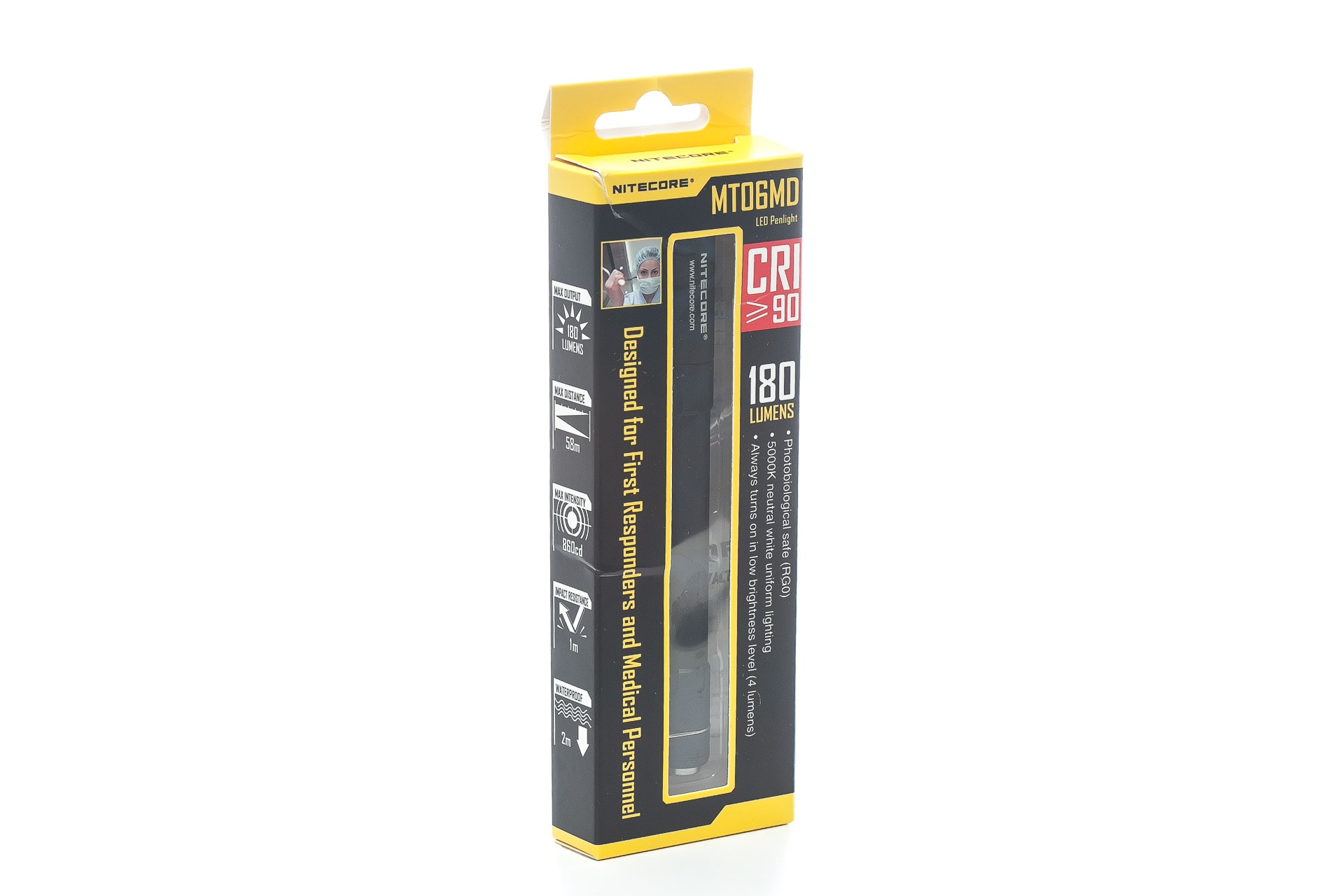
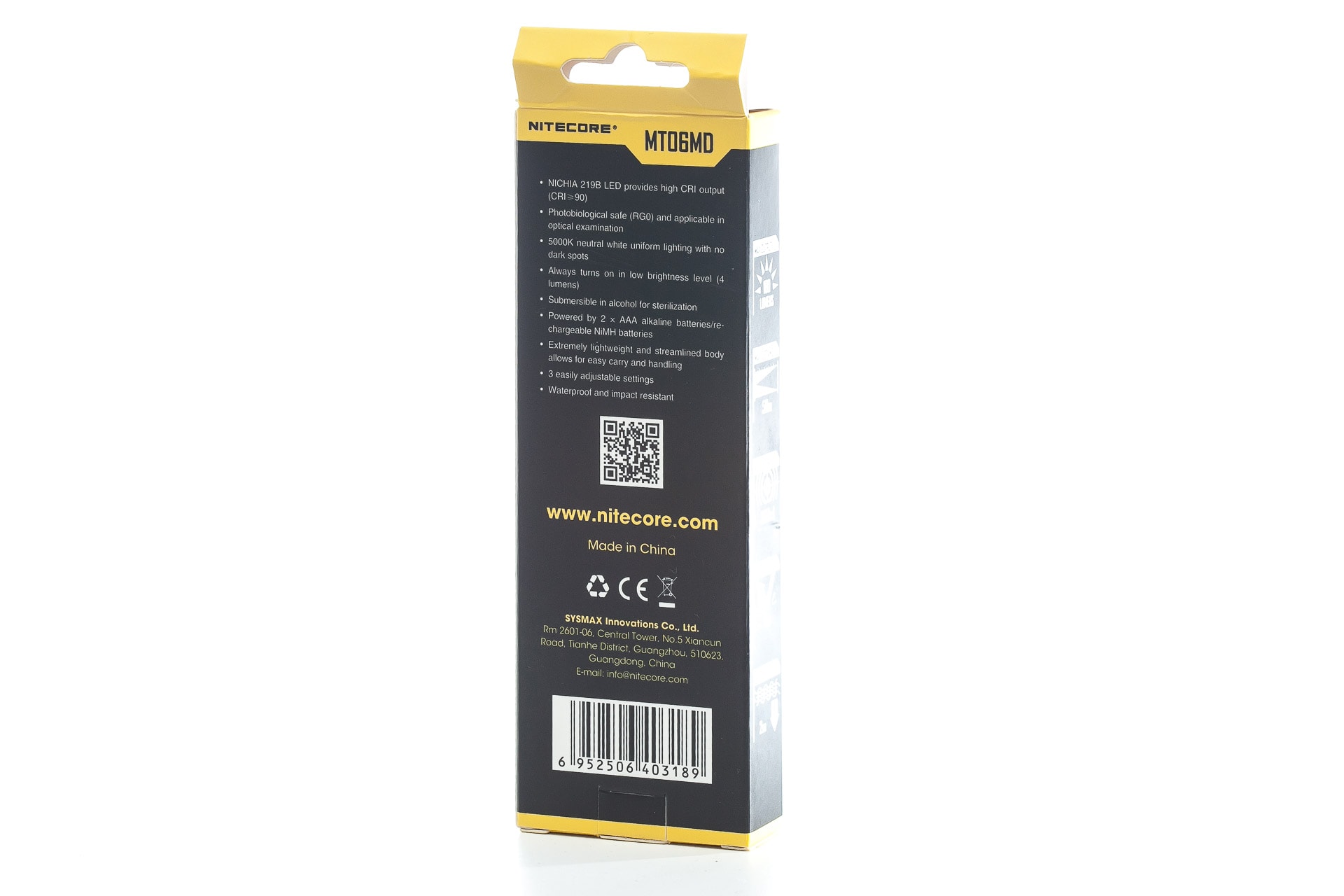
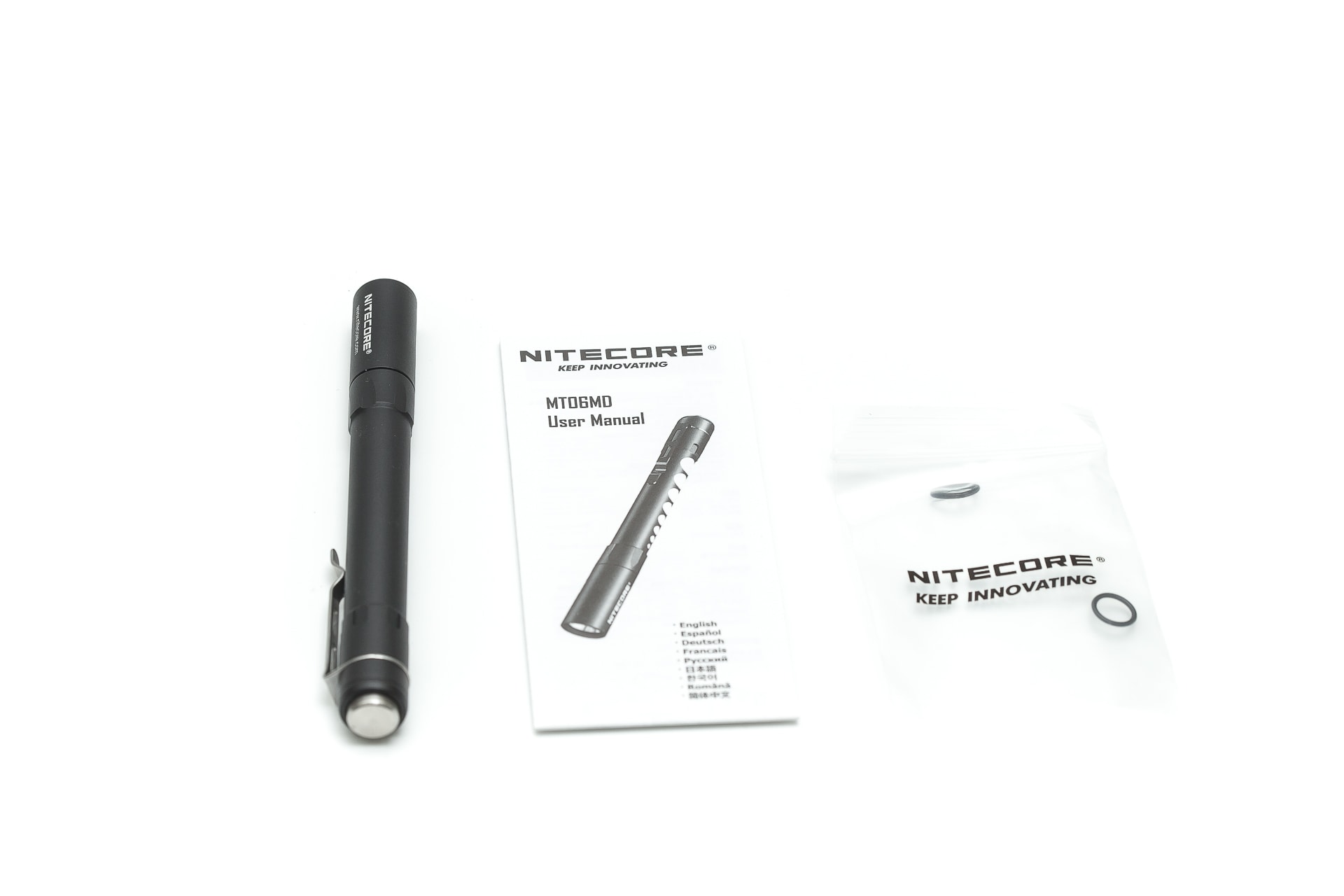
Flashlight in use
Since the flashlight is designed for first responders and medical personnel, it’s fair to focus more on their use case than anything else. This probably means that it is used to check pupil reflexes, and is kept in a pocket. It’s unlikely to be attached to a baseball cap, so a 2-way pocket clip is not required, for example.
It’s a penlight flashlight with a long and thin body, so it’s likely used in the overhand position or held like a pencil/pen.
The body doesn’t have the traditional knurling, but it has lots of very thin reeding. That doesn’t make it very rough but it does reduce its slipperiness. And even if you’d drop in an unpleasant place with liquids…. you don’t need to worry. The light is specced at IPX8, and it even mentions it’s suitable for alcohol sterilization. Just clean your hands afterward.
When you hold the light in an overhand position, you can use your thumb to turn the light on/off and change modes. The switch is located at the rear, and it’s a reverse clicky switch.
A reverse clicky switch means you have to fully click this switch before the light turns on. When the light is on, you just need to tap the switch to change modes. And the MT06MD doesn’t have mode memory so it will always start in low.
At the product page, you can choose between 2 options: Pupil gauge printed on the flashlight and without. The one in this review is without the pupil gauge option.
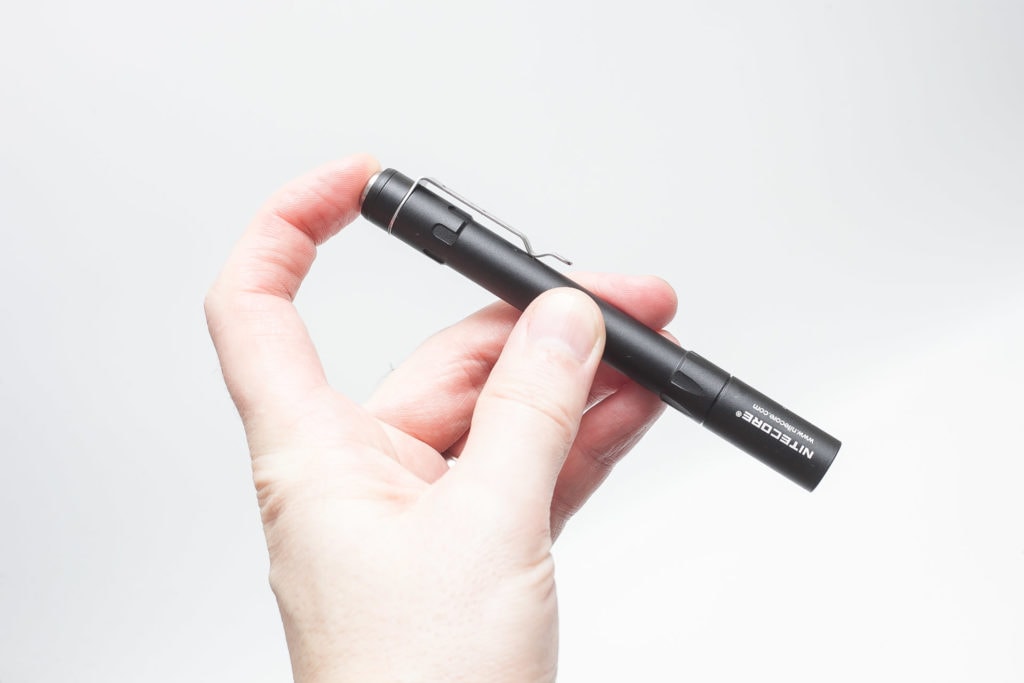
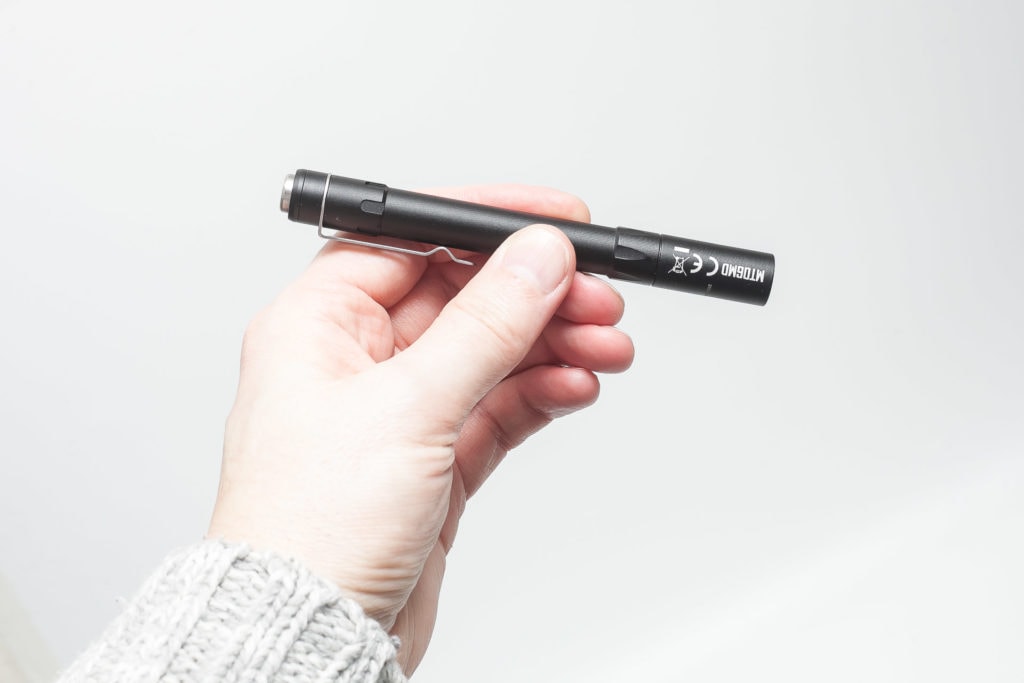
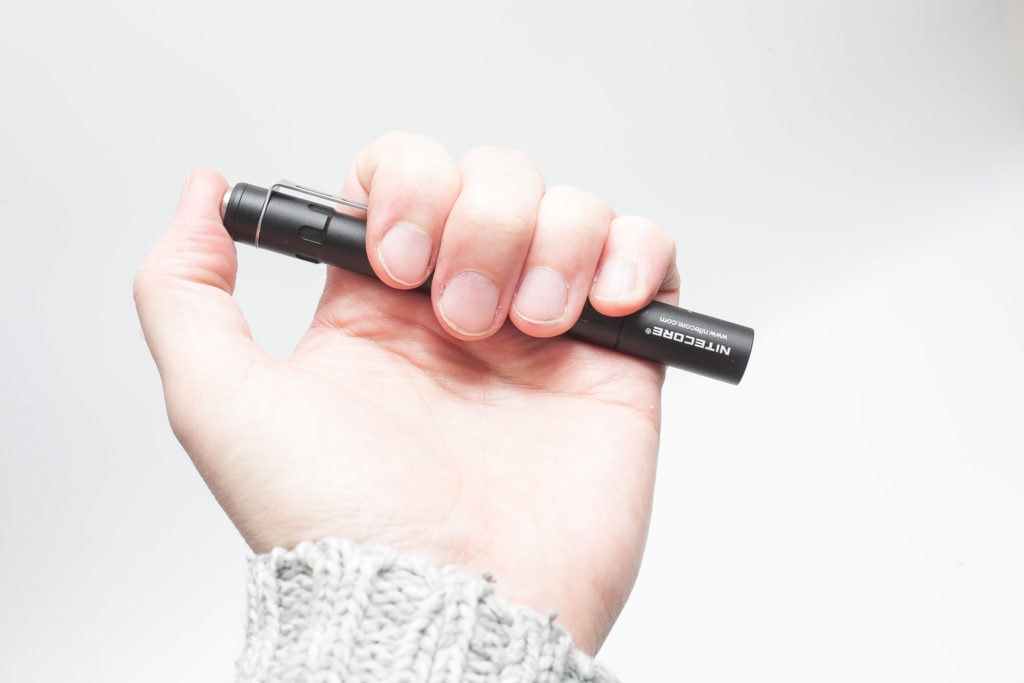
Build Quality, and Warranty
There is only 1 part you can unscrew, and thats the head. The tailcap can be removed, but that’s not the place to insert your batteries. The batteries are inserted from the front, with the positive terminals pointing towards the head.
The anodization is said to be HAIII and it has a matte finish.
Threads came well lubed and there’s 1 o-ring to keep water out, and results in a IPX8 rating. The threads are pretty thin though, so I hope that this won’t cause any problems in the future. So far, it hasn’t and it never cross-threaded, so I’ll trust it to be just fine.

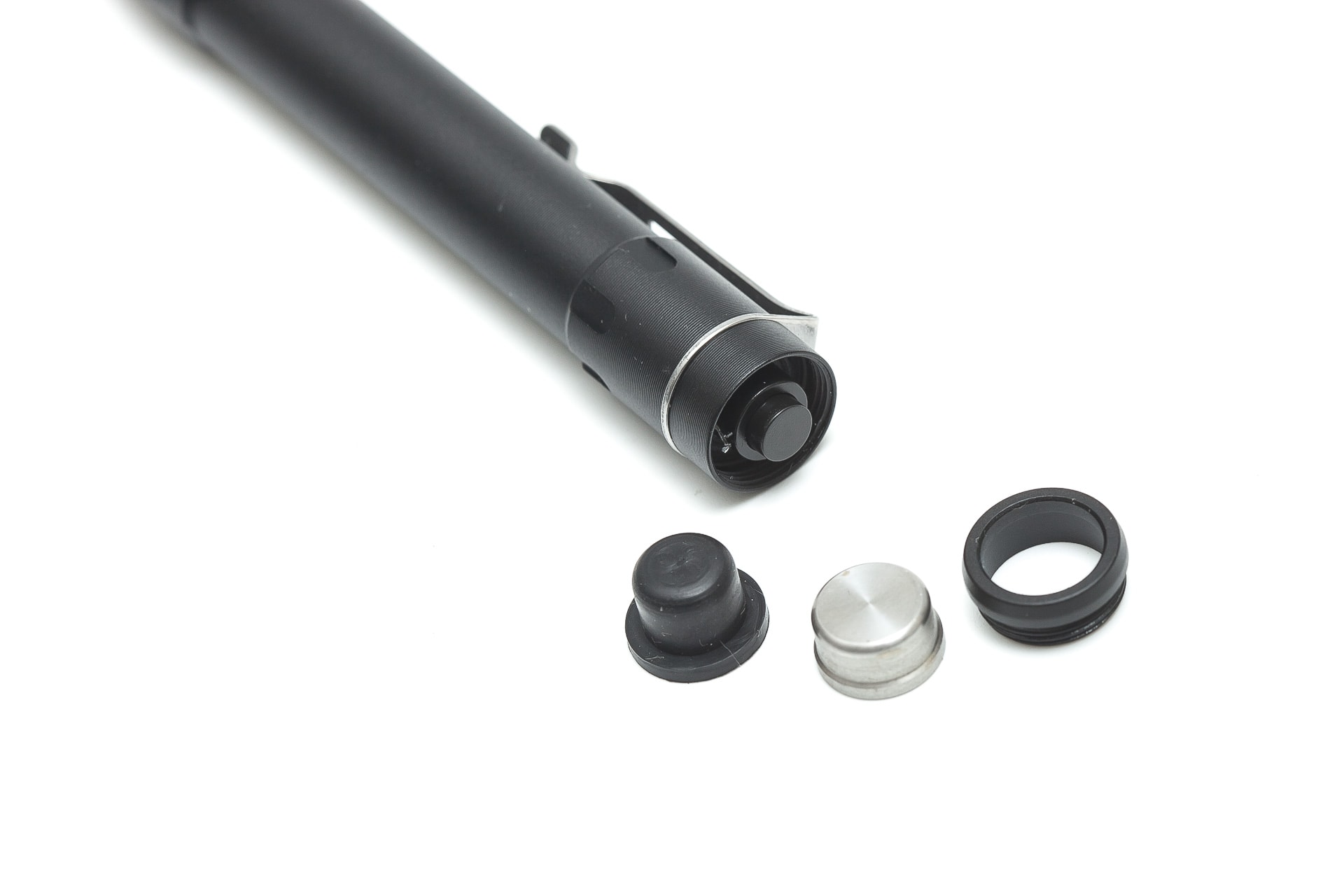

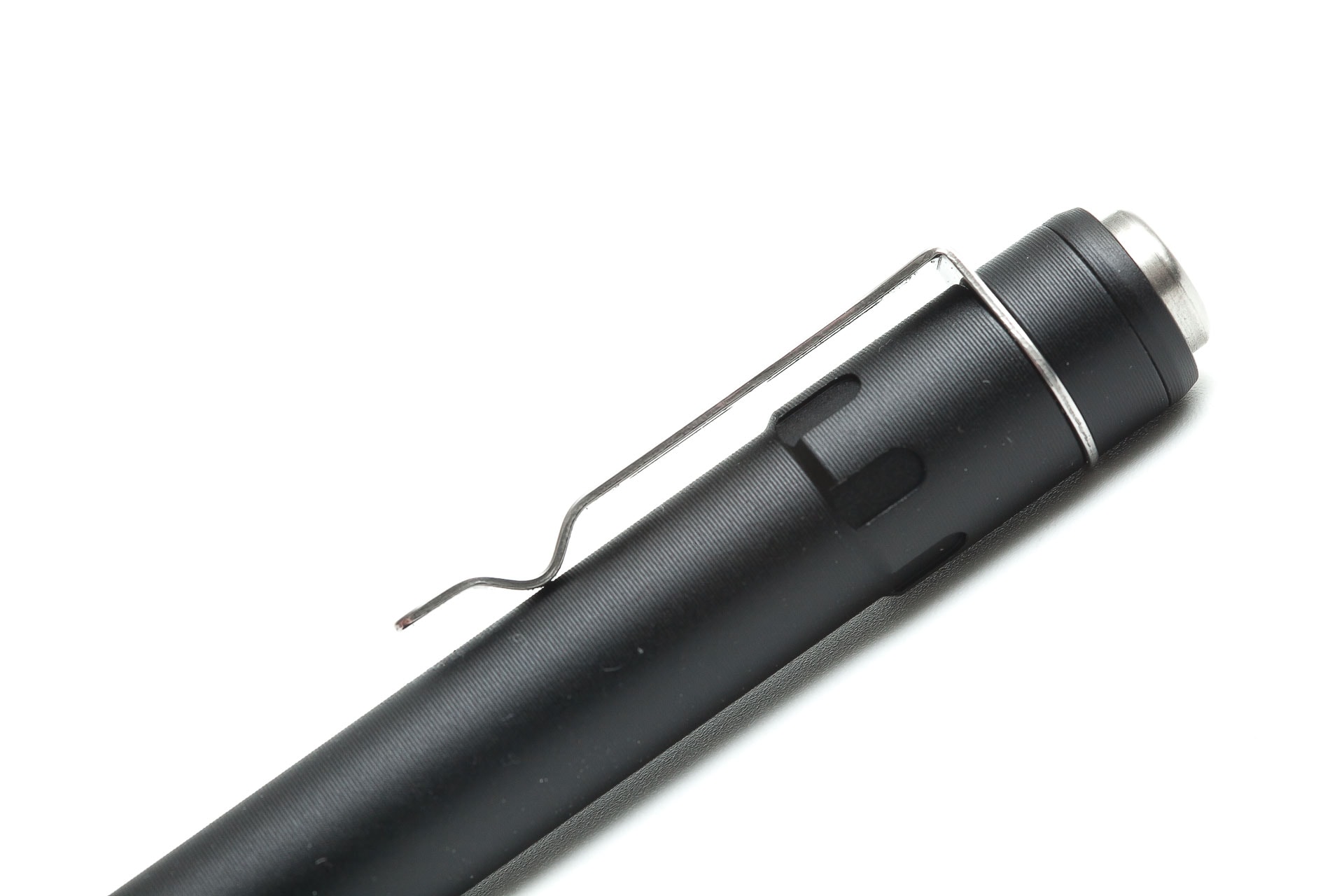
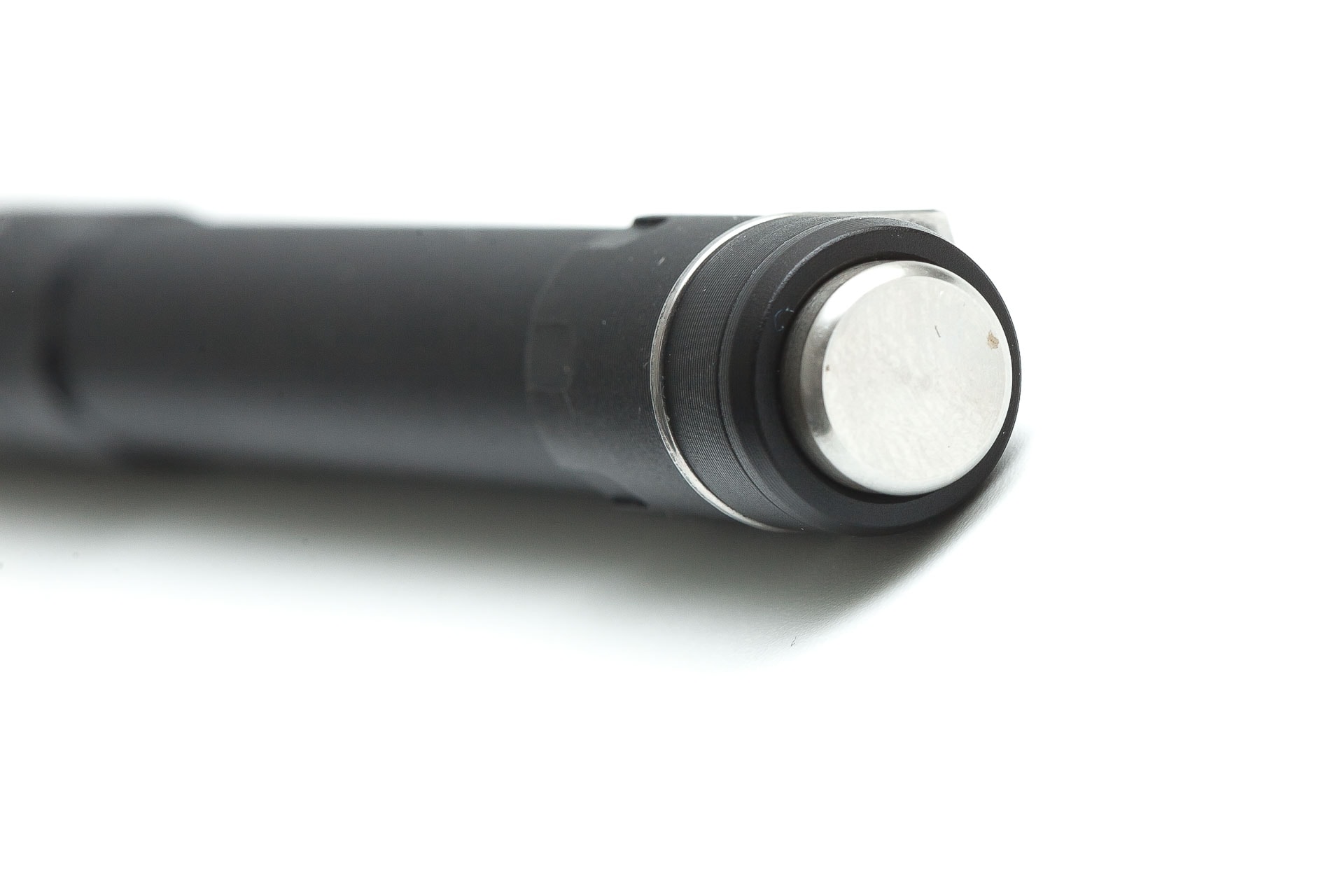
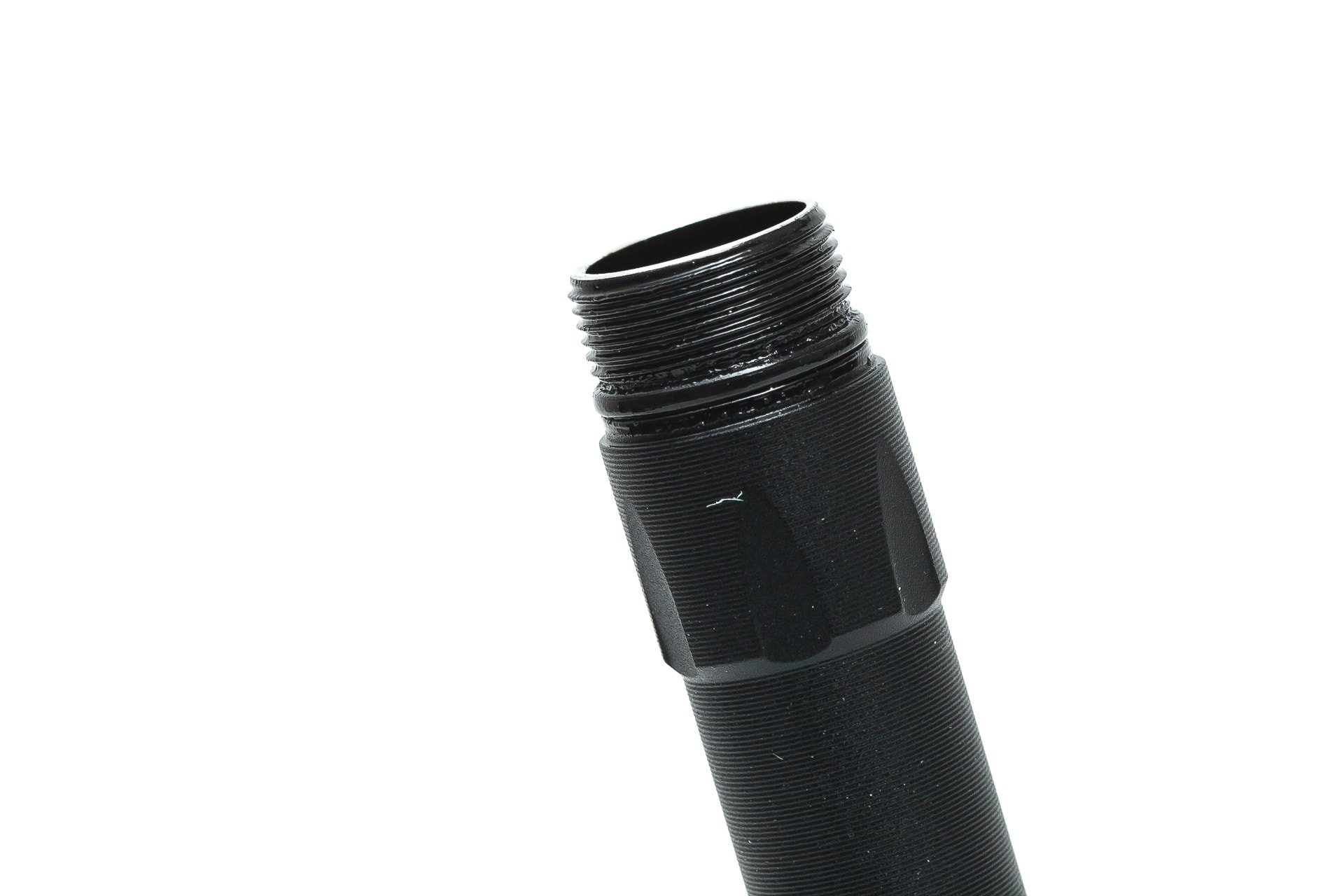
LED, Lens, Bezel, Beam, and Reflector
Time to talk about the LED.
The MT06MD is already a few years old. This isn’t a bad thing, but I wanted to point you to the LED. It’s the famous Nichia 219B instead of the 219C, which is commonly used nowadays.
The 219B in this light has a color temperature of 5000K, which is cool white, and it has a CRI rating of over 90.
I used my Opple Lightmaster PRO to measure CRI and CCT, and was surprised the measurements were so close to specs. The device itself is pretty cheap, and probably the greatest gadget I bought in 2021. And Nichia is a Japanese company, so I expect them to be very good quality, and very consistent. These numbers say enough.
Measured in low and medium mode:
- CCT: between 4984 and 5004
- CRI: Ra between 94.3 and 97.3
And DUV was calculated: -0.0006
Those are really good figures, and I really like the 5000K temperature. And the beam is pleasant to look at, with a distinct hotspot, and a nice amount of spill. The transition from hotspot to spill isn’t too sharp, but it’s visible.
The reflector is smooth, but don’t expect it to throw far. Throw measurements can be found in the performance section.
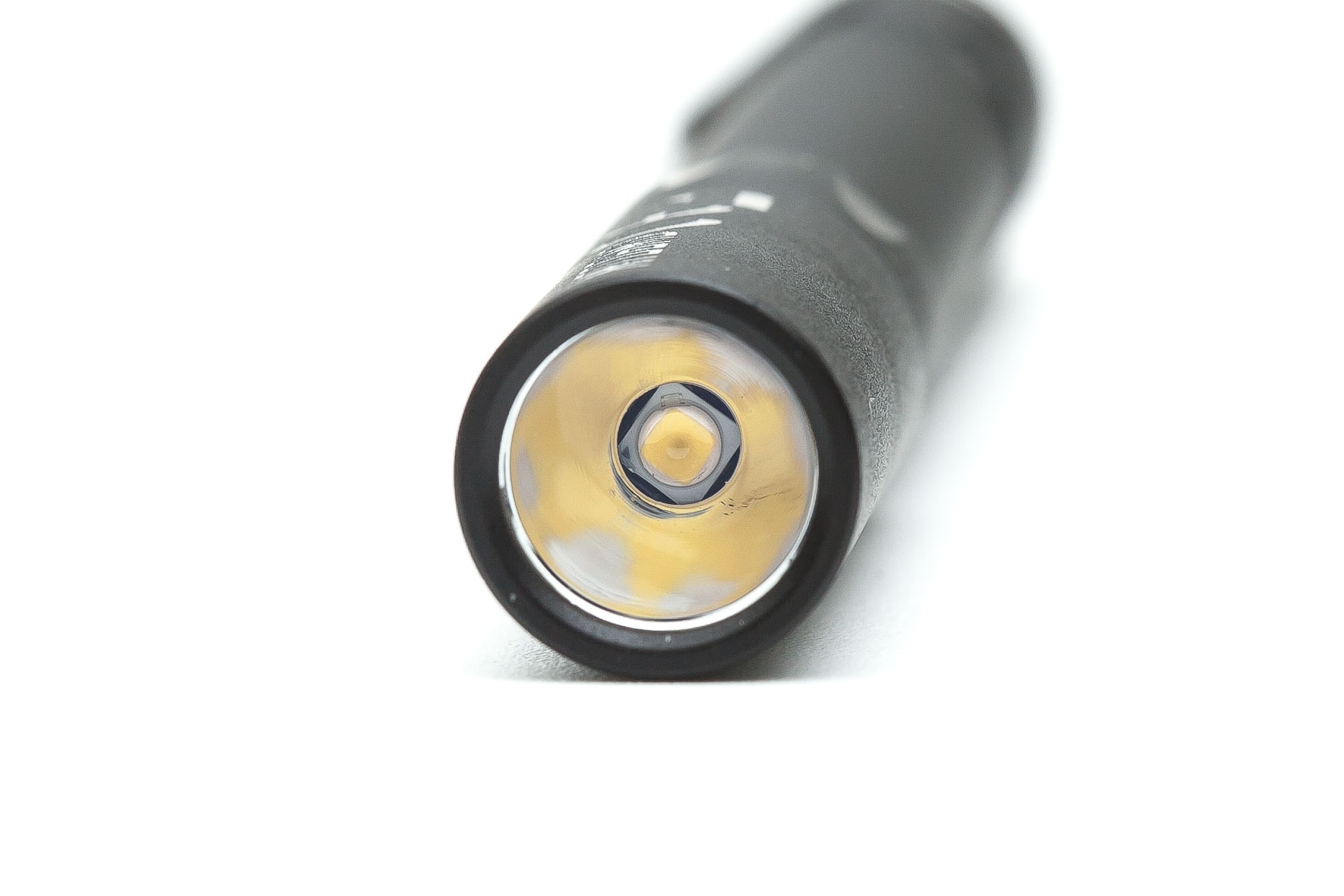
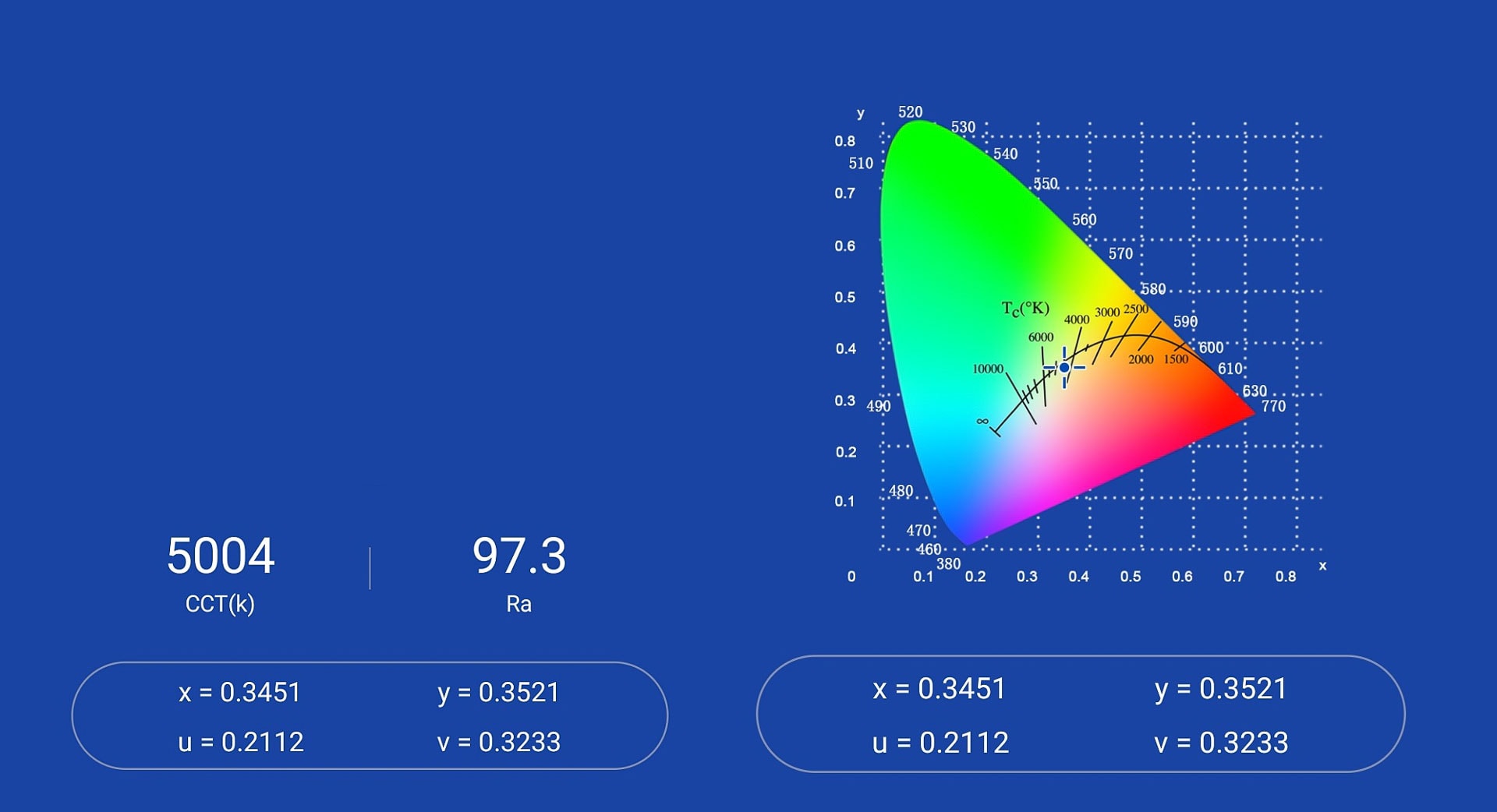
Dimensions and size comparison
- Length: 128.6 mm / 5 ”
- Head diameter: 14.1 mm / 0.56 ”
- Tailcap diameter: 14 mm / 0.55 ”
Weight:
- Empty: 22.4 g / 0.79 oz
- With 2 Eneloop batteries: 45.6 g / 1.61 oz
Penlight Flashlight comparison
Size compared to other penlights
Image 1, from left to right: Lumintop IYP365, Nitecore MT06MD, Olight i3T Plus, Acebeam PT10-GT, Wuben E19
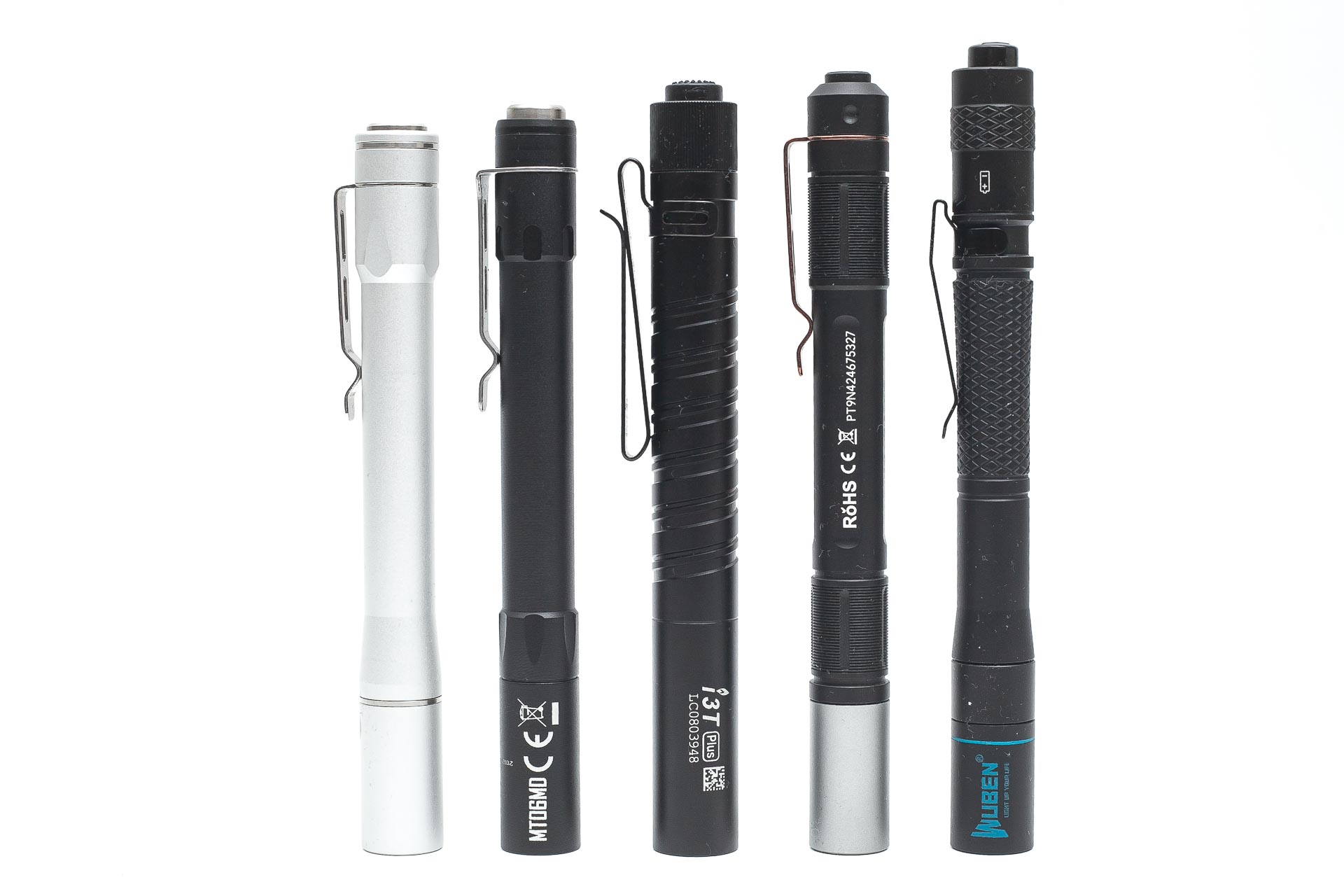
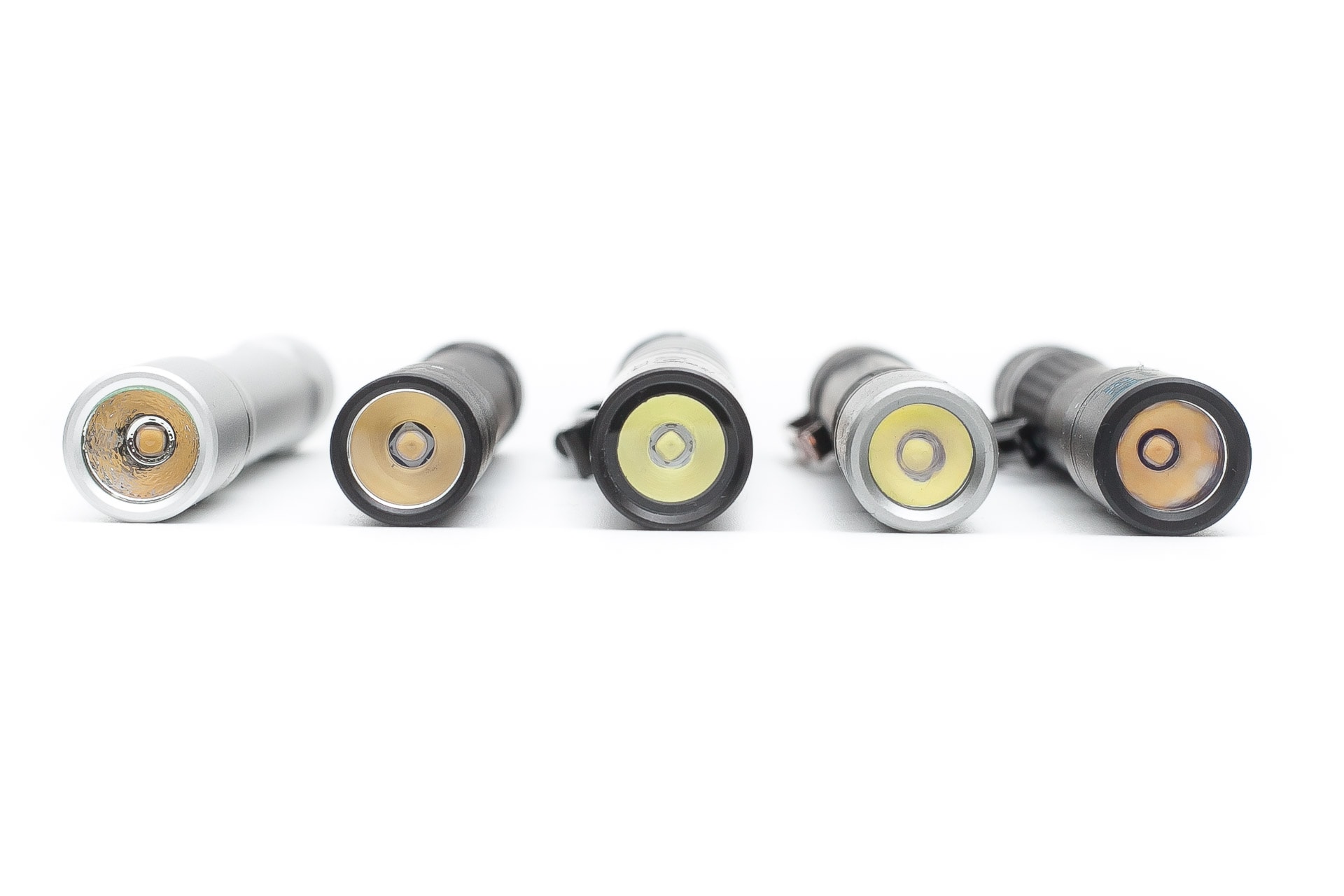
Driver & User Interface:
It’s a very easy UI with 3 modes, and no mode memory
Available modes:
- Low, Medium, High
From OFF:
- 1-click: On (low mode)
From ON:
- Half-press: Cycle through the menu from Low to High
- Single-click: off
Shortcuts:
- To Moon: single click from off
- To Strobe:
Mode memory:
- No, so it always starts in low
Blinky modes menu:
- none
Low battery warning:
- The light starts blinking when really low. You have to replace rechargeable batteries before this happens. You can read more in the performance section
Lock-out mode:
- None
PWM:
- Not visible
Batteries & Charging
Nitecore didn’t include batteries, which is good. Some brands include 2 Alkaline batteries, and although that sounds nice, if you keep them in storage for too long, you might have a disaster. Alkaline batteries (regardless the brand) are prone to leaking, and can damage the flashlight when they are loaded inside.
For the tests, I use 2 Panasonic Eneloop batteries with 750mAh each.
Performance
Lumen measurements:
All output numbers are relative to my homemade Integrating Sphere. It is set up with an Extech SDL400 Lux Meter for measurements including a Kenko PRO1D ND-16 filter. The base measurement is done with a Convoy S2+ that has been tested at 255 lumens.
For Amp readings, I use a Fluke 77III DMM. For higher amps, I now use a Fluke 325 True RMS clamp meter. For microamps, I use a cheap DMM with an easy-to-use micro amp setting.
All of my readings were taken from 2 fully-charged Panasonic Eneloop AAA batteries (750mAh). The 30-second measurement is important because that’s related to the ANSI FL1 standards. A manufacturer should show this measurement instead of the highest output at turn on.
| Amp at start | Specs | start | 30 sec | 10 min |
|---|---|---|---|---|
| Low | 4 | 6.05 | 6.05 | 6 |
| Med | – | 34 | 34 | 29 |
| High | 180 | 177 | 168 lm | 121 |
These numbers aren’t too far off, but low is higher than what they say and high is just a tad lower.
Parasitic drain:
- Couldn’t measure
Runtime:
The runtime test was done with the 50cm integrating sphere, including the Kenko Pro1D ND-16 filter and Extech SDL400 data logging Lux Meter.
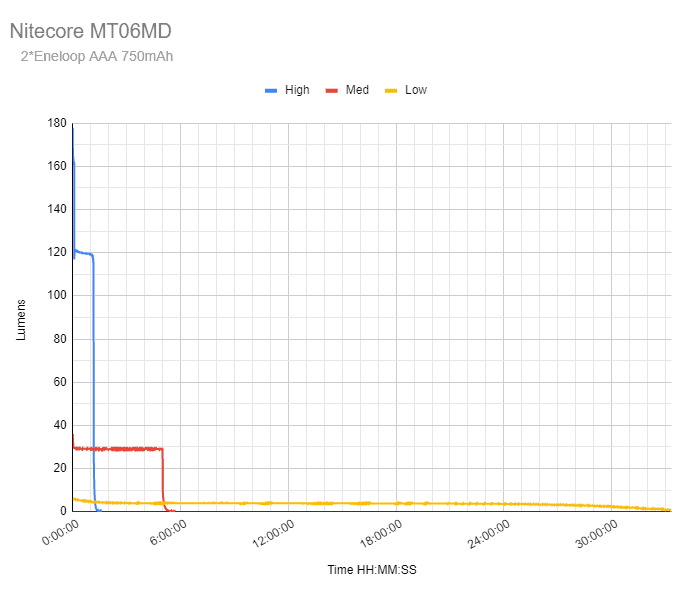
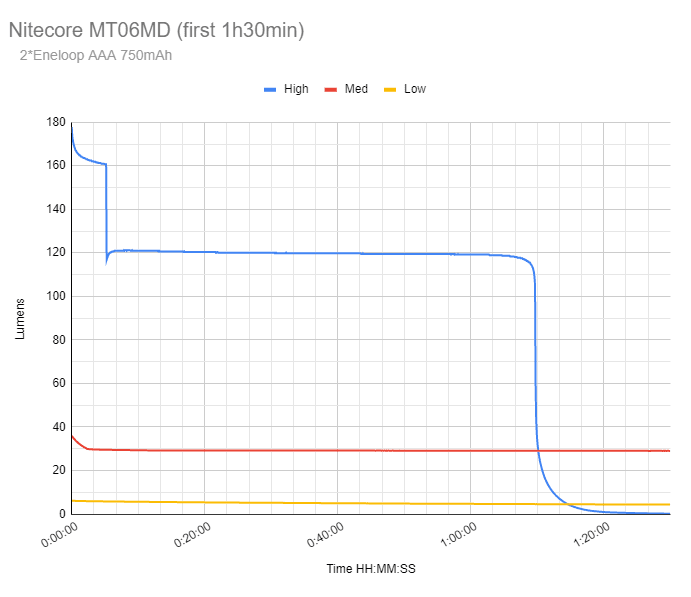
High mode: starts off at 177 lumens and slowly drops to 161 lumens within 5minutes. It then drops quickly down to 120 lumens and sustains this output till a bit after 1h. It then slowly decreases output, and then around 1h10min drops rapidly. At 1h11min it reaches the threshold of 10% output, which is the total runtime. The light continues running for a bit.
Medium mode: starts at around 35 lumens and drops to 30 lumens in 2.5 minutes. It then continues running at roughly 30 lumens till the 5h00min mark and drops rapidly. This is the total runtime. It does run for a few minutes at a 1-lumen output, but I would suggest not doing this, and replacing the batteries when it decreases output.
Low mode: start at 6 lumens and very slowly drops to 5 lumens in 15 minutes. At 1h15min it’s down to about 4 lumens. At 25h it reaches 3 lumens. At 29h37min it reaches 2 lumens. At 31h50min it reaches 1 lumen. At 33h16min it’s 0 lumens. At this point, the flashlight starts flashing.
Note: after each runtime test, the batteries were dangerously depleted. I don’t recommend you do this with rechargeable batteries. With Alkaline batteries, you can probably get more hours at a low output because you can run them almost to 0V.
There is no LVP (low voltage protection) so keep that in mind.
Throw Measurement
Measurements were taken at 2 meters distance with a professional Hagner E4-X Lux Meter.
| Modes | Specs | Cd measured | Throw in Meters | Throw in Yards |
|---|---|---|---|---|
| Low | – | 32 | 11 | 12 |
| Med | – | 188 | 27 | 30 |
| High | 860 cd | 980 cd | 63 | 68 |
These lights are not meant to throw far.
Beamshots
For the following beamshots, I used a Canon EOS 5D Mk2 and a 50mm lens. manual settings: ISO1600, 1/40sec , F4, 5000K
The wall is about 5 meters away, and the fence about 4 meters.
The flashlight’s use case is actually for medical professionals, but to compare the beams, I am using the old way of testing: beamshots. All shots were using Panasonic Eneloop batteries.
The Acebeam PT10GT also has a 10900 type lithium-ion battery, but that was not used for the comparison.








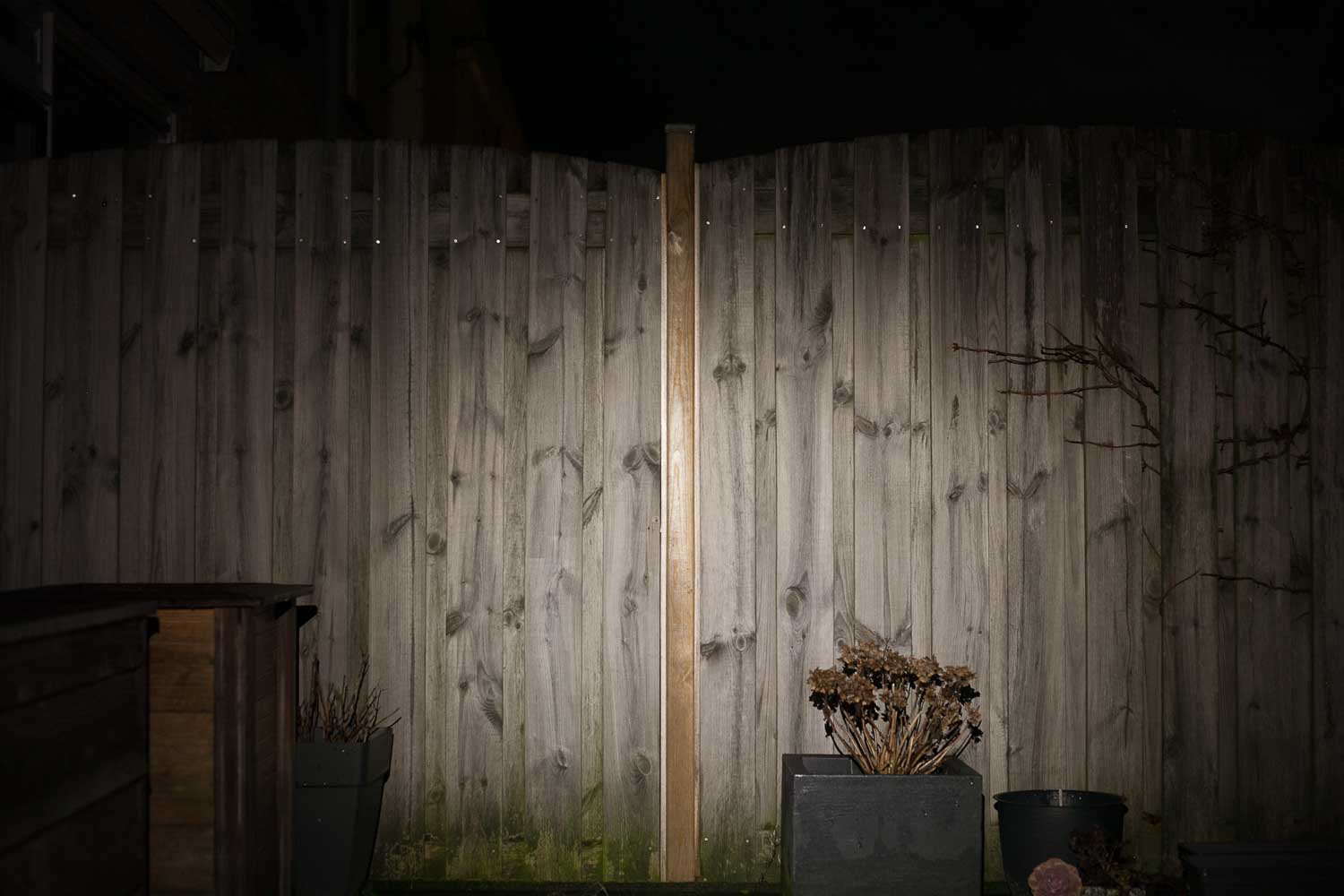
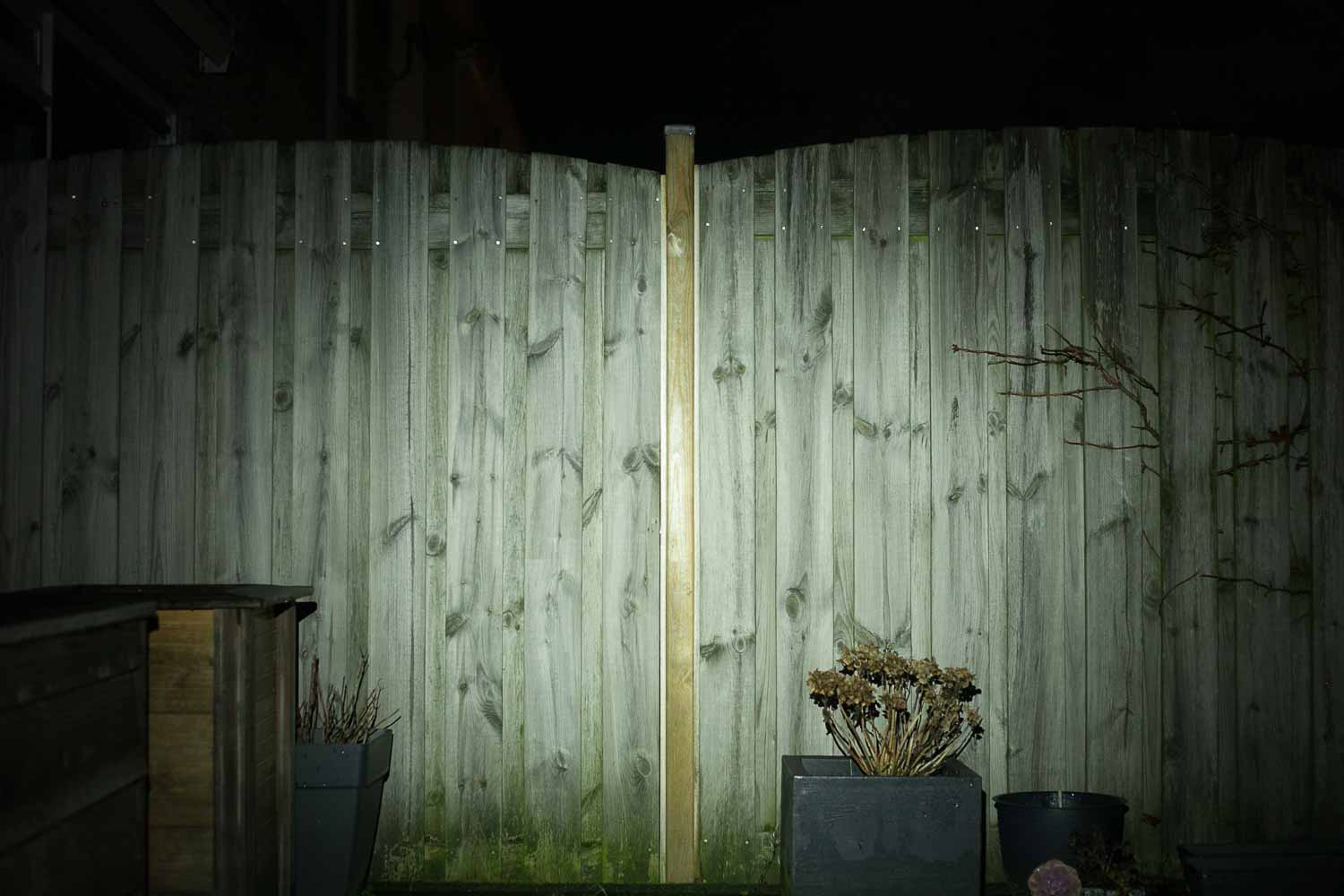

Disclaimer: This flashlight was sent to me for review at no cost by Nitecore. I have not been paid to review, nor have I been holding back on problems or defects.
Final Verdict
Pros
- High CRI
- Plenty bright
- No mode memory, so starts in Lowest output
- No PWM
Cons
- No built in charger?
- Discharges rechargeable batteries too deep
Explanation on star ratings:
1: Avoid: my phone flashlight would be a better choice – 2: Poor: significant defect or issues; almost unusable – 3: Average: some defects or issues; but still usable 4: Good: recommended (minor issues) – 5: Great: highly recommended

4 stars: ★★★★
The only real con (like it is with many pen lights) is there is no real LVP (low voltage protection) so the rechargeable batteries get discharged a bit too deep. This can be a good thing for Alkalines, because you can get squeeze out every little bit of energy, but not for NiMH.
If you want a high CRI emitter with 5000K, in a small penlight, with the lowest output being 6 lumens. Definitely consider buying the Nitecore MT06MD
Nitecore MT06MD discount code
Get 15% off by using discount code 15OFF on orders above $75. Below $75, use our unique coupon code 1Lumen to get 10% off.
1lumen selects and reviews products personally. We may earn affiliate commissions through our links, which help support our testing.